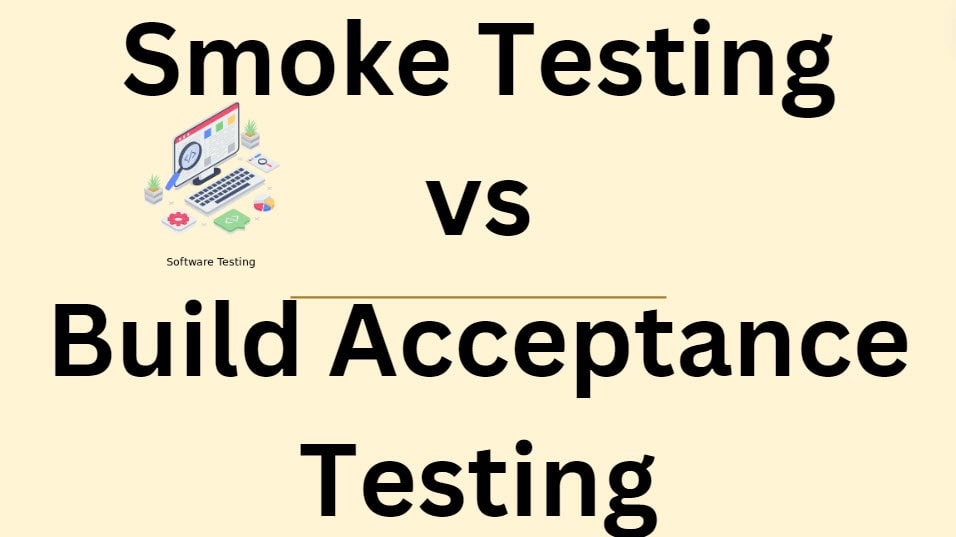Smoke testing and build acceptance testing are closely related concepts in software quality assurance, but they have some key differences
Smoke testing, also known as “build verification testing,” is a preliminary type of testing performed to ensure that the most critical functions of a software build are working as expected. It’s a quick and simple test to determine if the build is stable enough for further, more rigorous testing. Smoke testing gets its name from hardware testing, where the first test was to turn on the device and see if it smoked.
Build acceptance testing (BAT), sometimes referred to as build verification testing (BVT) or sanity testing, is typically considered a superset of smoke testing. While smoke testing focuses on the most critical functionalities, BAT is generally more comprehensive and may include additional checks to ensure the build meets certain acceptance criteria.
Key differences
Scope: Smoke testing is usually narrower in scope, focusing on core functionalities, while BAT can be more extensive.
Depth: Smoke tests are typically shallow and quick, whereas BAT may involve more in-depth testing of features.
Purpose: The primary goal of smoke testing is to quickly determine if a build is stable enough for further testing, while BAT aims to verify if the build meets acceptance criteria for release.
Timing: Smoke tests are often run earlier in the testing process, while BAT may be conducted later, closer to a potential release.
Here’s a tabular comparison of smoke testing and build acceptance testing (also known as build verification testing):
| Fact | Smoke Testing | Build Acceptance Testing (BAT) |
|---|---|---|
| Purpose | Verifies basic functionality and stability of a build | Ensures the build meets minimal acceptance criteria |
| Scope | Limited, it focuses on the critical paths | Broader, covers more functionality |
| Depth | Shallow, surface-level testing | More in-depth than smoke tests |
| Timing | Performed very early in the testing cycle | Typically done after smoke tests pass |
| Duration | Quick and brief | Longer than smoke tests |
| Goal | Determine if the build is stable for further testing | Verify if the build meets basic requirements |
| Relationship | Subset of BAT | Superset of smoke tests |
You may also like following the articles below
It’s worth noting that in some contexts, these terms are used interchangeably, and their exact definitions can vary between organizations and development teams. The most important aspect is to have a clear understanding within your team about what each testing phase entails.

My name is Madhu, and I’m a certified Test Consultant with more than 16 years of hands-on experience developing and maintaining manual and Test Automation in the Software industry. I have experience with automation tools such as Selenium, Katalon Studio, etc.
